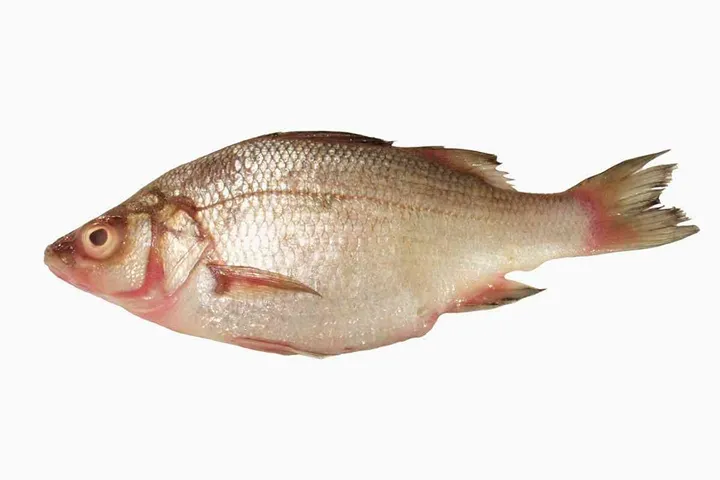’No major role for fish’ in the prevention of heart failure; only a possible beneficial effect in th
The consumption of fish has no major role in the prevention of heart failure, according to results from a large prospective population study.(1) The study, … Läs mer,


The consumption of fish has no major role in the prevention of heart failure, according to results from a large prospective population study.(1) The study, which was started in 1990 and involved all men and women over the age of 55 living in a suburb of Rotterdam, found no difference in the risk of developing heart failure between those who did eat fish and those who didn’t.
The study is published on 30 September in the October issue of the European Journal of Heart Failure.\n”Scientists and health authorities are increasingly persuaded that the intake of fish – even in small amounts – will protect against the risk of fatal myocardial infarction,” said study investigator Dr Marianne Geleinjse from Wageningen University in the Netherlands. ”However, there is no strong evidence that eating fish will protect against heart failure. One study has suggested that this might be so, but we could not confirm it in our cohort study of older Dutch people.”
Heart failure is by far today’s single biggest reason for acute hospital admission. Around 30 million people in Europe have heart failure and its incidence is still increasing: more cases are being identified, more people are living to an old age, and more are surviving a heart attack but with damage to the heart muscle. According to one study, the reported prevalence among those aged 65-74 years is one in 35, and among the over-85s one in seven.
According to background information to the study, the lifetime risk of developing heart failure is even higher – estimated in men and women as one in four at age 40. The risks increase with age, and prognosis is poor; a previous report from the same Rotterdam Study has shown survival rates at one, two and five years of 89%, 79%, and 59%, representing an age-adjusted mortality rate twice that of those without heart failure.(2) The hazard ratio for sudden death was found to be almost five times higher.
With heart failure treatments often limited to palliative care, much rests on prevention; this latest report from the Rotterdam Study was to investigate whether intake of the long-chain n-3 polyunsaturated fatty acids (PUFAs) found in fish conferred protection against heart failure as they seem to do against coronary heart disease.(3)
The analysis comprised 5299 subjects (41% men, mean age 67.5 years) who were free from heart failure and for whom dietary data were available. During 11.4 years of follow-up, 669 subjects developed heart failure. Their habitual diet had been assessed at baseline (in a self-reported checklist and by expert interview), with subjects specifically asked to indicate the frequency, amount, and kind of fish they had eaten, either as a hot meal, on a sandwich, or between meals.
Results showed that the dietary intake of fish was not significantly related to heart failure incidence. This relative risk was measured according to five levels of fish consumption as reflected in intake of two long chain n-3 PUFAs (eicosapentaenoic acid [EPA] and docosahexaenoic acid [DHA]), both of which have been shown to exert some cardiovascular benefit via anti-inflammatory mechanisms, anti-arrhythmic effects and/or a reduction in serum triglycerides, blood pressure, and heart rate.\nThe relative risk (RR) of heart failure in the top (highest) and bottom (lowest) quintile of EPA plus DHA intake was 0.89 (95% CI, 0.69–1.14) after adjustment for lifestyle and dietary factors, a non-significant finding.
Results were also estimated according to the weight of fish consumed; but even for a high daily fish consumption of more than 20 grams a day there appeared no added protection against heart failure. Incidence rates were the same in those who consumed no fish (incidence rate of 11 per 1000), moderate fish (median 9g per day, 12.3 per 1000) or high fish (9.9 per 1000). The relative risk of heart failure in the high intake groups was 0.96 (0.78–1.18) when compared with no intake.
Variations in risk were seen in various sub-groups according to age, sex and body mass index (BMI), but once again the differences were not statistically significant. In diabetic subjects, however, an inverse association of EPA plus DHA intake with heart failure was observed (RR 0.58 (0.32–1.06) for top vs. bottom quartile), which was just of borderline statistical significance. Similarly, a high EPA plus DHA intake tended to be protective (but not statistically significant) in women (RR 0.75, 0.54–1.04), although not in men.
Commenting on the public health implications of the study Dr Geleijnse said: ”Many health authorities recommend two weekly servings of fish – particularly fatty fish like salmon, mackerel and herring – for the prevention of cardiovascular disease. Based on our data we would not change this advice, even though fish intake was not associated with the development of heart failure in our cohort. Fish intake in the Netherlands is extremely low – on average less than one portion per week – so maybe higher intakes are needed for any protection against heart failure.\n”Apart from n-3 fatty acids, fish also contains other healthy components such as vitamin D and selenium. Fish is a good source of protein and is more healthy than, for example, red meat.”\nAccording to the authors this is only the second ever study to examine the relationship between PUFAs and the risk of heart failure; the other, over 12 years of follow-up among older adults, did find that consumption of tuna or other broiled or baked fish (but not fried fish) was associated with a lower incidence of heart failure.(4)
1. Dijkstra C, Brouwer IA, Van Rooij FJA, et al. Intake of very long chain n-3 fatty acids from fish and the incidence of heart failure: the Rotterdam Study. Eur J Heart Fail 2009; doi:10.1093/eurjhf/hfp126.\n2. Mosterd A, Cost B, Hoes AW, et al. The prognosis of heart failure in the general population: The Rotterdam Study. Eur Heart J 2001; 22: 1318-1327.\n3. There has been fairly consistent evidence that n-3 PUFAs do have a protective effect against coronary heart disease since the first suggestions were made more than 30 years ago following studies in the Inuit people of Greeneland. More recently, a 2009 review in the Journal of the American College of Cardiology, whose evidence was based mainly on four randomised trials involving nearly 40,000 subjects, described the effect of n-3 PUFAs in the prevention of cardiovascular disease as ”of great promise”. The GISSI-Prevenzione trial of 1999 established the potential of dietary n-3 PUFAs for reducing mortality in patients after recent myocardial infarction. The effect on coronary heart disease mortality of n-3 PUFAs as a supplement post-infarction is presently being studied in the Alpha Omega trial in the Netherlands.\n4. Mozaffarian D, Bryson CL, Lemaitre RN, et al. Fish intake and risk of incident heart failure. J Am Coll Cardiol 2005; 45: 2015–2021.\n* The European Journal of Heart Failure is a journal of the European Society of Cardiology.\n* ESC Guidelines for the Diagnosis and Treatment of Acute and Chronic Heart Failure simplify the definitions of new, transient and chronic disease. The 2008 ESC Guidelines can be seen in various formats at https://www.escardio.org/guidelines-surveys/esc-guidelines/Pages/acute-chronic-heart-failure.aspx




